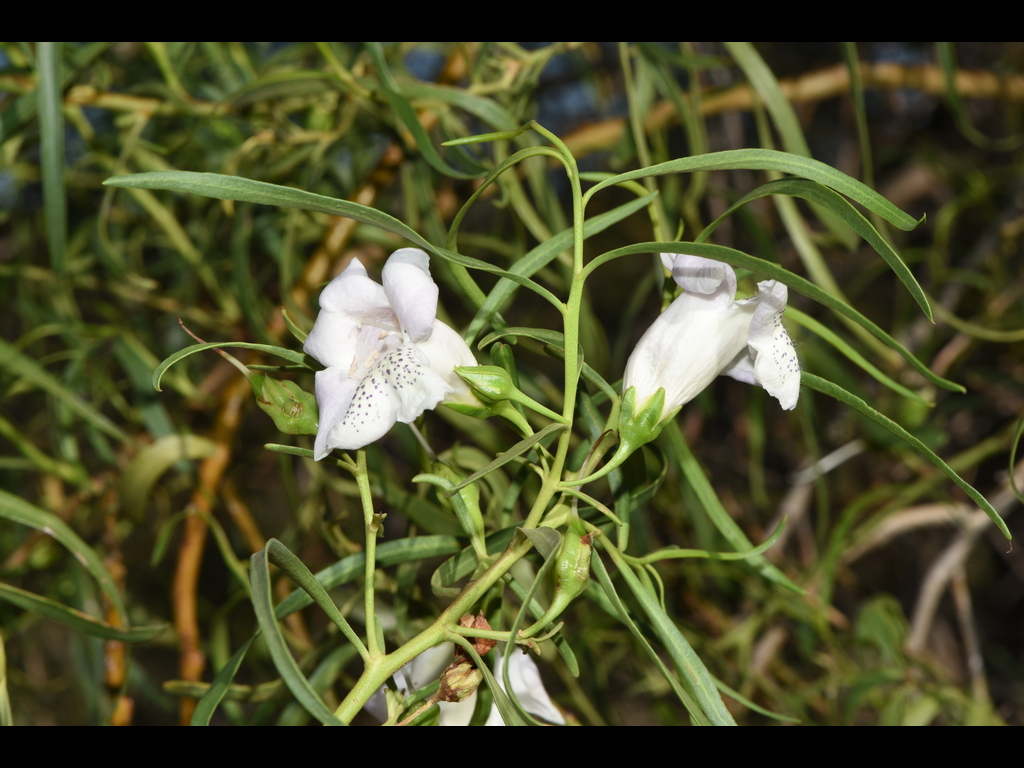Eremophila 'Big Poly'
- File Number
- 1729
- ACRA Field Book Number
- 1757
- Registration Date
- 10/11/2022
- Application Received
- 21/03/2021
- Family
- Scrophulariaceae
- Cultivar Name
- Eremophila 'Big Poly'
- Origin
- Hybrid of E. bignoniiflora x E. polyclada, discovered in the wild in the 1970s by Russell Wait. This same hybrid has since been found in several locations and is known to occur naturally in Victoria, NSW and Queensland. Application submitted on behalf of the ANPSA Eremophila Study Group.
- Characteristics
- Large, dense shrub, 7m (h) x 3m (w), leaves: light green long and weeping, similar to the E. bignoniiflora parent. Flowers take their colouring from the E. polyclada parent: buds - cream, petals – very pale pinky-mauve, about the same size as the E. bignoniiflora flower and with grey-mauve spots in the throat. It flowers year from winter to summer. Its vigour and size means it can be used as a windbreak and it grows rapidly to 3m high if well-watered. It also responds well to moderate pruning, which makes it suitable for hedging.
- Cultivation
- Plants have been introduced into the nursery trade from several wild collections and hence characteristics of the plants available to the public can be quite variable. It is known to be frost hardy to about -8 degrees C. It grows in heavier soils than many Eremophila, being comfortable in clay. It is drought-hardy but needs supplementary water to keep it flowering at its best. There is a tendency to woodiness as the plant ages. It has been propagated vegetatively through several generations.
- Publication
- Growing Eremophila, R. Wait, 2021. p73
- Colour Coding
- N/A
- Propagation
- Cuttings. The best material is fresh, firm tip growth taken at any time of the year.
- Applicant Name
- Lyndal Thorburn
- Uses
- Suitable for use as a feature plant in a large garden, or a hedge.
- Availability
- Eremophila ‘Big Poly is widely available from commercial nurseries around Australia
- ANBG Accession Numbers
- -
- NSL ID
- -

